Top 5 Deadly Poisonous Fish
The five lethal dangerous fish that you should be aware about
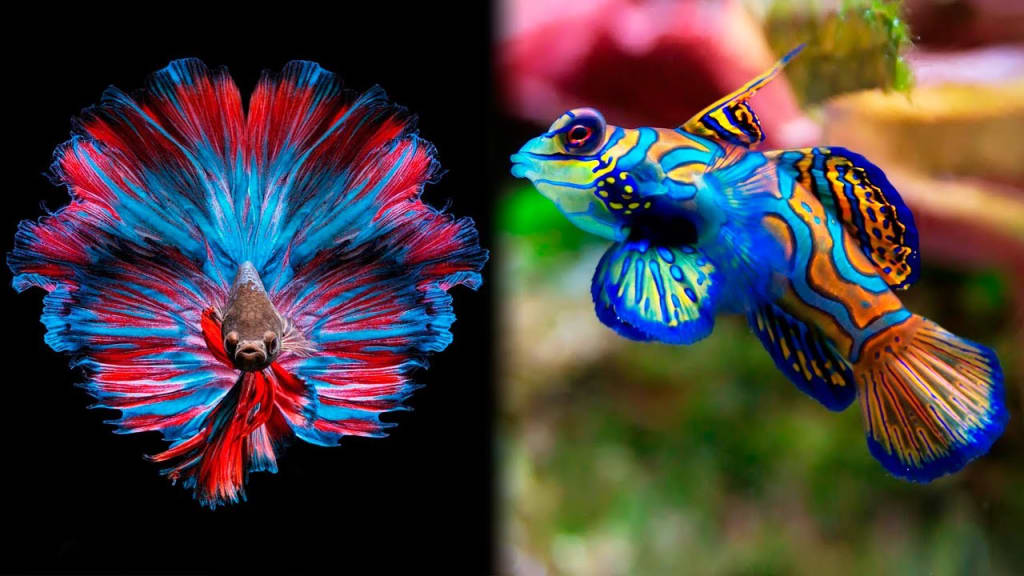
Fish are one of the most popular sources of food around the world, providing a valuable source of protein, omega-3 fatty acids, and other essential nutrients. However, not all fish are safe to eat, and some can even be deadly if consumed or handled improperly. In this essay, we will explore some of the most poisonous fish in the world, their dangers, and how to stay safe when dealing with them.
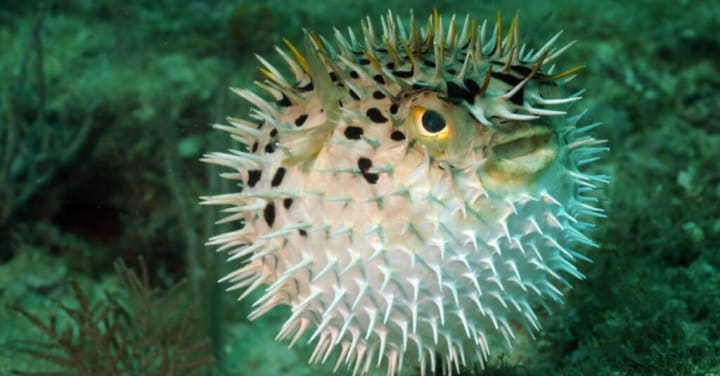
1.Pufferfish(Fugu)
The pufferfish, also known as Fugu in Japan, is a type of fish that is considered a delicacy in many parts of East Asia. However, the pufferfish is also one of the most poisonous fish in the world, with its internal organs containing tetrodotoxin, a potent neurotoxin that can cause paralysis and death within minutes. Despite the dangers, pufferfish remains a popular dish in Japan, where it is served in a variety of dishes, including sashimi, hot pot, and sushi. However, only licensed chefs are permitted to prepare and serve pufferfish in Japan, as it requires a high level of skill and expertise to remove the toxic parts of the fish while leaving the edible parts intact.
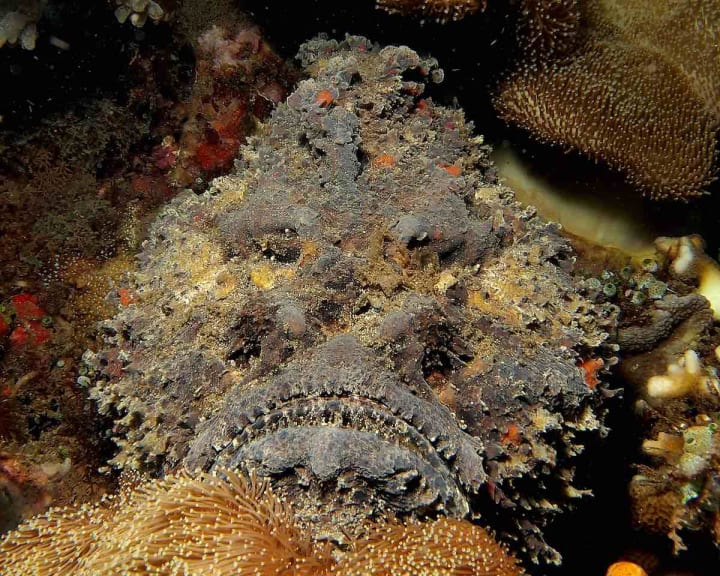
2.Stonefish
The stonefish is a highly venomous fish that belongs to the Synanceiidae family. It is found in the Indo-Pacific region and is known for its ability to blend in with its surroundings, making it difficult to detect. The stonefish has 13 dorsal spines that are connected to venom glands. If stepped on or touched, the spines can release venom into the victim’s body, causing severe pain, swelling, and tissue damage. In some cases, the venom can cause paralysis and even death. Symptoms of a stonefish sting usually appear within a few hours and can include intense pain, swelling, redness, and muscle weakness. Treatment typically involves soaking the affected area in hot water, which can help reduce pain and inactivate the venom. In severe cases, antivenom may be necessary.
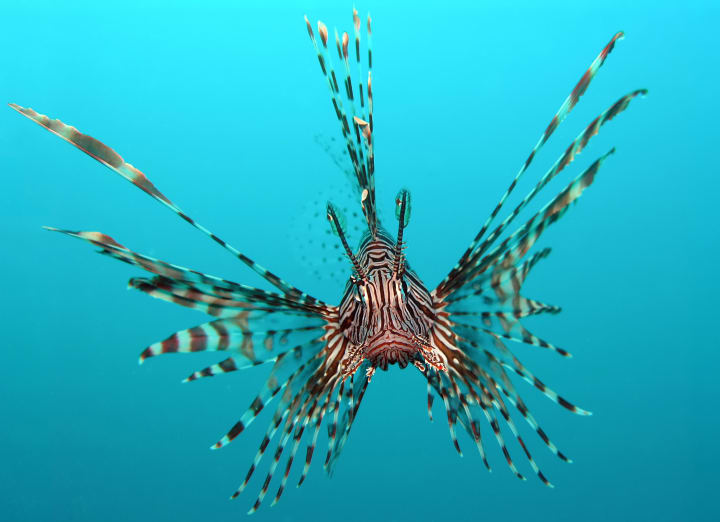
3.Lionfish
Lionfish are a species of venomous marine fish that are native to the Indo-Pacific region, but have become invasive in many parts of the world, including the Caribbean Sea and the Gulf of Mexico. They are popular in the aquarium trade due to their striking appearance, but their introduction to new areas can have devastating effects on native ecosystems. Lionfish have venomous spines on their dorsal, pelvic, and anal fins, which they use for defense. If a person is stung by a lionfish, they may experience intense pain, swelling, and redness at the site of the sting. Other symptoms can include nausea, vomiting, headache, and muscle weakness. In rare cases, a lionfish sting can cause heart failure or respiratory distress, which can be life-threatening. If you are stung by a lionfish, it is important to seek medical attention immediately. The affected area should be soaked in hot water (but not so hot as to burn the skin) for 30-90 minutes, as this can help to break down the venom and relieve pain.
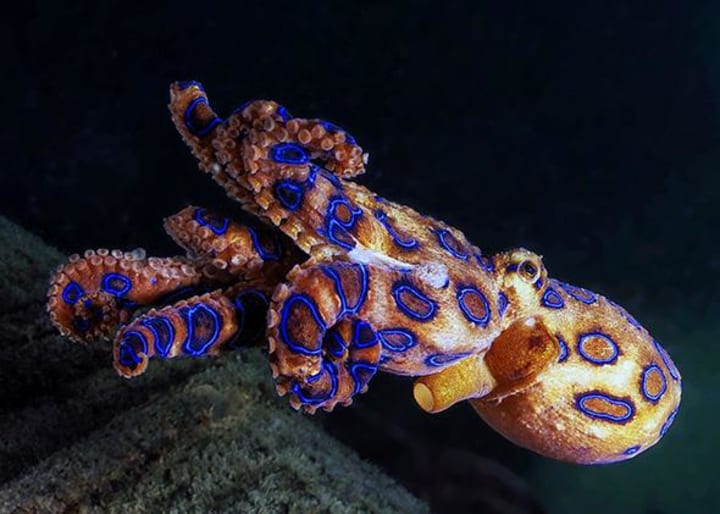
4.Blue-ringed octopus
The blue-ringed octopus is a highly venomous marine animal found in the Pacific and Indian Oceans, primarily in shallow coral reefs and tide pools. Despite their small size (typically less than 8 cm in length), these octopuses are considered one of the world’s most venomous animals. The blue-ringed octopus has a distinctive pattern of bright blue rings on its body, which it displays when threatened. Its venom contains tetrodotoxin, a potent neurotoxin that can cause paralysis and respiratory failure in humans. There is no known antivenom for blue-ringed octopus venom, so treatment focuses on supportive measures to manage symptoms and prevent complications.
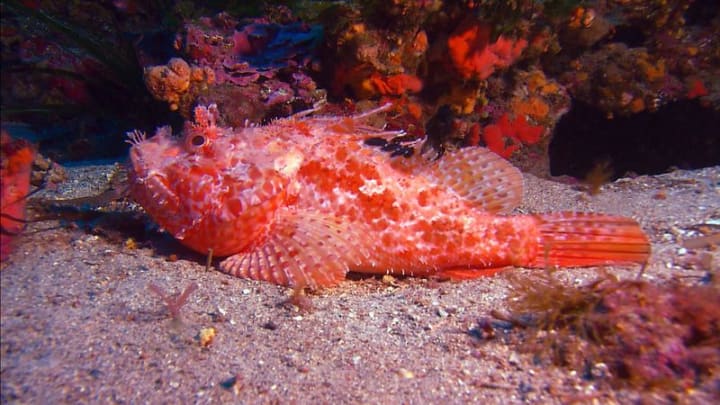
5.Scorpionfish
Scorpionfish are a group of marine fish found in tropical and temperate waters around the world. They are named for their venomous spines, which they use for defense. There are many different species of scorpionfish, but they are all similar in appearance, with spiny fins, a large head, and a broad mouth. The venom of scorpionfish contains a variety of toxins that can cause a range of symptoms in humans, including extreme pain, swelling, and tissue necrosis (death of living tissue). The severity of the symptoms depends on the species of scorpionfish and the location of the sting. In some cases, the venom can also cause respiratory distress, paralysis, and even death. If you are stung by a scorpionfish, it is important to seek medical attention immediately.
It’s important to note that not all fish are poisonous, and many are safe and nutritious to eat. However, it’s always important to be cautious and informed when handling or consuming fish, particularly if you are not familiar with the species.
About the Creator
Enjoyed the story? Support the Creator.
Subscribe for free to receive all their stories in your feed. You could also pledge your support or give them a one-off tip, letting them know you appreciate their work.





Comments
There are no comments for this story
Be the first to respond and start the conversation.